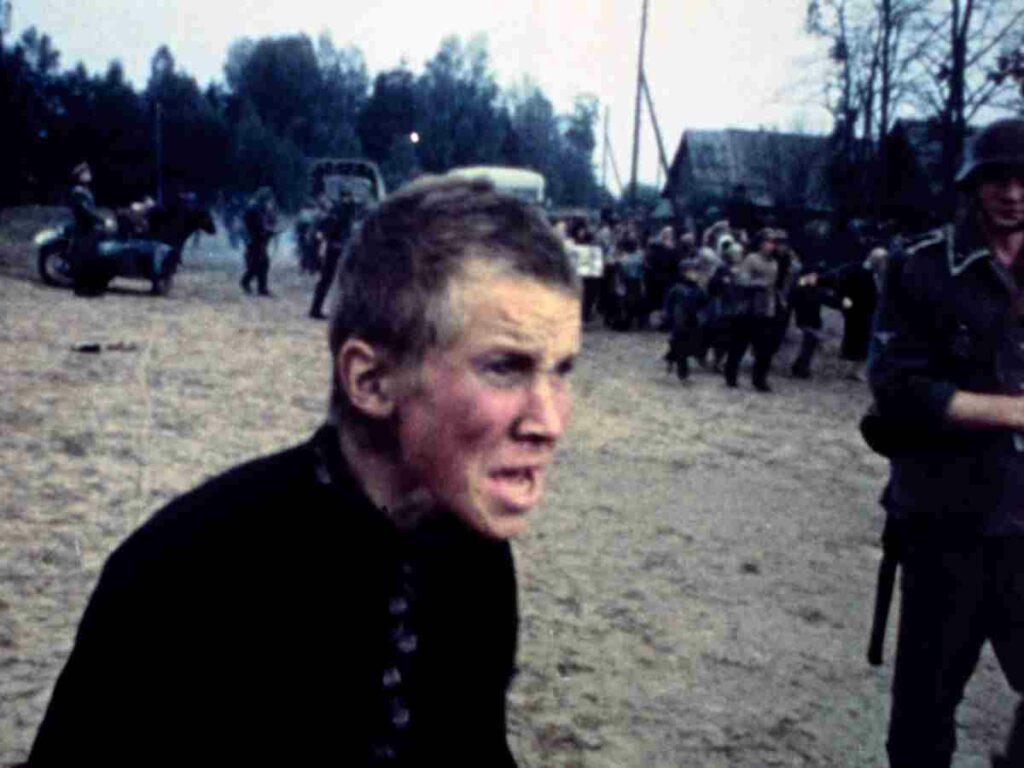On his 100th birth anniversary, here’s revisiting the films of Satyajit Ray that stand relevant and, more so special, three decades after his death.
2021 is a momentous year for us cinephiles as it marks the birth centenary of the great Satyajit Ray. The son of great Bengali poet Sukumar Ray, Satyajit Ray was one of the pioneers of the Indian Parallel Cinema Movement. Along with his contemporaries like Ritwik Ghatak, Mrinal Sen
One of the giants of world cinema, Japanese filmmaker Akira Kurosawa once said, “Not to have seen the cinema of Ray means existing in the world without seeing the sun or the moon.”
On his 100th birth anniversary, here’s revisiting and celebrating his body of work that stands relevant and, more so special, three decades after his death:
Read: Speaking of Films by Satyajit Ray
The Apu Trilogy
Satyajit Ray’s journey in cinema began in 1955 with the film Pather Panchali. Widely considered as one of the greatest films ever made, this is the first instalment in The Apu Trilogy. The film deals with the story of two siblings and their life through different phases of joys and sorrows. Here, we find our protagonist Apu look at the world around him — the nature, the tragedies around him, the people, their relationships, in an innocent way that reflects the exact gaze of a newborn first seeing the outside world. Today when filmmakers often fall in the trap of poverty porn in showcasing people from the lowest strata of the society, Ray presented his film in such a humanizing way that it mesmerizes the audience without any provocation of sympathy for them.
In the next two films of this trilogy, Ray showcased how people change with time. Where in Pather Panchali, we see Apu trying to explore the world around him, in Aparajito, Ray showcased beautifully how a grown-up, matured Apu faces the outside world. The final film in the trilogy Apur Sansar takes this idea a step ahead with the portrayal of Apu’s sense of responsibility first for his wife and then for his son. All three films present the reality of the society that is still relevant today. His humanizing treatment resonates and stays with us even 60 years after.
Portrayal of Women in Ray’s Films
The portrayal of women’s condition and psyche is one of the recurring themes in Ray’s films. His films like Mahanagar, Charulata, Kanchenjunga and Kapurush, capture beautifully the story of women empowerment, patriarchy and women’s desires.
In Mahanagar, Ray marvellously showcased his beliefs about woman empowerment. Through the film, he shows the constant tension and conflict between two opposite genders through the lead characters Arati and Subrata, when Arati take a job to support her family. This film is a spectacular portrayal of male ego dynamics when a woman takes his place in the family. The story of gender equality and women empowerment is presented in a manner that is way ahead of its time.
In Ray’s first color film Kanchenjunga, he portrayed how women’s individuality is suppressed in the patriarchal society. Ray showed this condition beautifully juxtaposing it with the elements of nature. Veiling the Kanchenjunga with clouds and the roads of Darjeeling with mist, this condition of suppression of women desire is represented as a visual poetry.
But, it is in the evergreen Charulata, where he brought the desire of women to the celluloid with brilliance. He invites us to the broken nest of Bhupati and Charu showcasin
Character Studies in Nayak, Jalsaghar, Abhija
The films of Satyajit Ray are often gripping character studies. In 1966 he gave us the iconic Nayak. It portrays a gripping character study of guilt, insecurities and dilemma through a famous film star Arindam Mukherjee. The dark portrayal of the inside world of the people society admires, is not only a criticism of the hypocrisy of the society but also an introspection of us.
In Jalsaghar, he takes us to the aristocracy of Biswambhar Roy. It is kind of a cautionary tale on how someone’s arrogance over his dignity, pride and honor causes him his eventual downfall.
He takes this story of dignity and honor to a new height when he examines a hot-headed taxi driver in Abhijan. It tells the story of Narsingha, a descendent of Rajput, who is dismayed by the world around him and harbors disgust towards everyone, none of who seems to follow the path of law and morality. Yet, these people are more materialistically successful in their lives. It appalls him, leading him to questioning his own moral choices in life. We see him make compromises to find an escape from reality. Eventually though, he comes to terms with his truth, his reality.
Questions of Morals in Calcutta Trilogy
During the turbulent time of the 1970s, Ray took his filmography to new heights with his famous Calcutta Trilogy (Pratidwandi, Seemabaddha and Jana Aranya). Set in the backdrop of the Naxalite movement, these films are Ray’s most political works. But, these are not about politics of the state, rather the politics of human morals. They mock and examine the collective morality of the people living in the city of Kolkata (then Calcutta).
Where Pratidwandi talks about the moral dilemmas of a society, Seemabaddha talks about how the outside world can affect someone’s own morality and in Jana Aranya, Ray questions us our own morals values. Do we have any or is it just a facade?
On Superstition and Religious Dogmatism
We all know that Ray was a versatile filmmaker whose body of work ranged from period pieces to fantasy films. But, a common thread that ran across his films was that they were all rooted in realism. His films were a mirror to the society.
In Mahapurush, Ray tells the story of Birinchi Baba, a self-proclaimed god man, who deceives people in exchange for his pseudo-intellectual sermons on life. A satire on human’s blind beliefs, Mahapurush ends on a rather thought provoking note. Ray portrays how superstition and religious fanaticism blinds people against their own intelligence.
But the portrayal of religious dogmatism in one of his best films Devi is bone chilling. It tells the story of Doyamoyee, whom his father-in-law believes to be a re-incarnation of goddess Durga. He worships Doyamoyee and gives her the status of a goddess. But this whole world of false belief shatters when a tragedy occurs in his family. Devi is a haunting yet poetic representation of how religious dogmatism drives people to false beliefs and its sometimes grave consequences.
Self-Reflection
In the last phase of his prolonged movie making career, he made statements about the society with his own personal realisations through films like Ganashatru and Agantuk.
In Ganashatru, he shows how religious bigotry of people affects the whole society. The film shines a light on our hypocrisies — how we raise dishonourable, ignorant men on to a pedestal while the rational, innocent men are treated as an enemy of the society. Authentic in its portrayal, Ganashatru resonates with our country’s current political climate.
In my opinion, his last film Agantuk is his final statement on the society’s rather dismal evolution. Through the character of Manomohon Mitra, Ray actually portrayed himself. He comments on the degradation of the society in a so-called civilised world. Showcasing the dupery and double-dealings of a society that robs us of our innocence and makes us to resign to a world where free thought is limited, he reserves his affection for the innocent, uncivilised.
Like all his films, Agantuk too was way ahead of its time and so relevant today.
Conclusion
Satyajt Ray is a master of his craft. From women empowerment and religious dogmatism to society’s collective morality, the themes dealt in his films are still relevant today. The problems, the crisis, the conflicts are still present in the modern world and their presentation is far ahead of their times. A true visionary, Ray created timeless films and their impact will remain forever etched in the eons of history.
Read: Satyajit Ray Miscellany: On Life, Cinema



